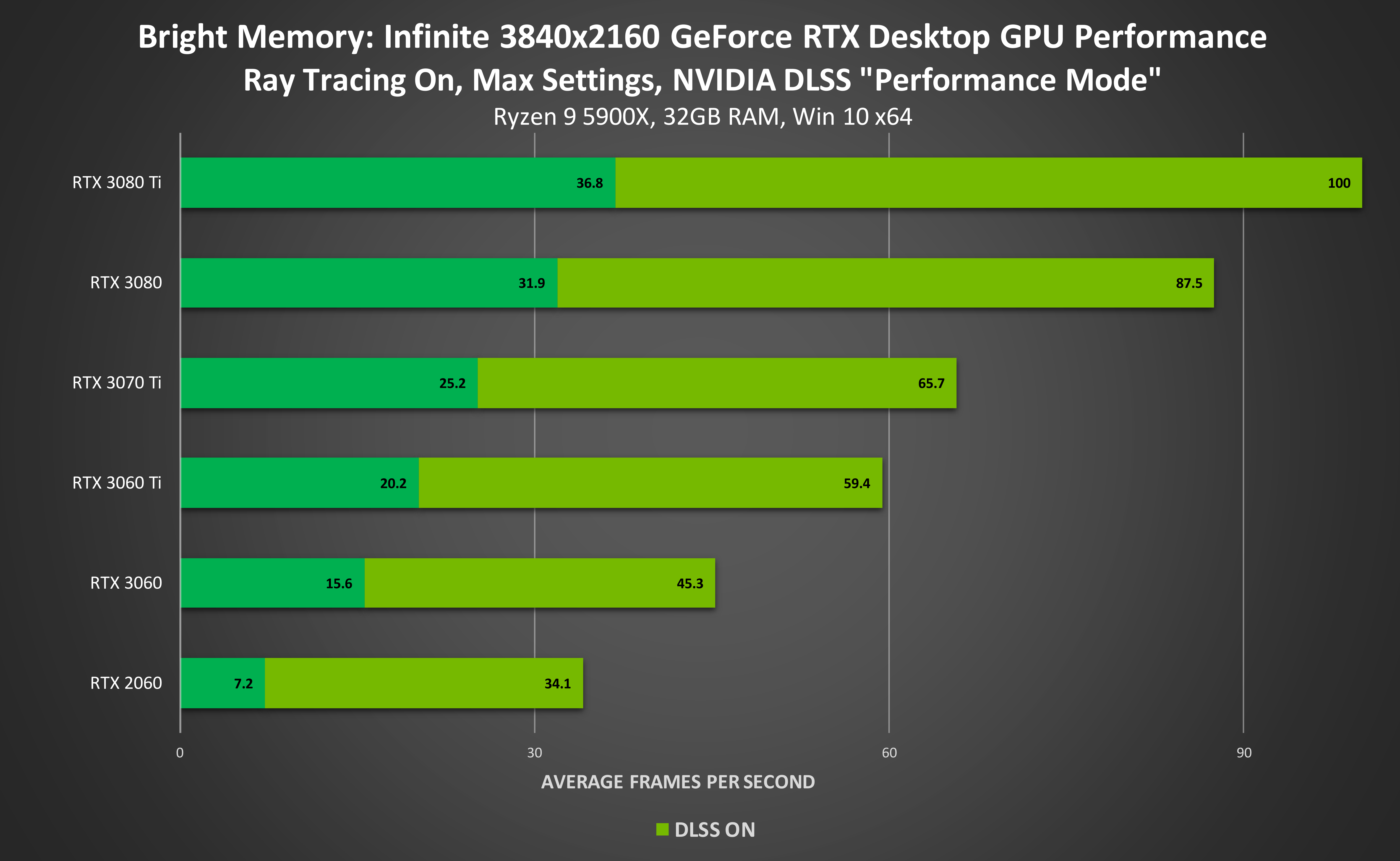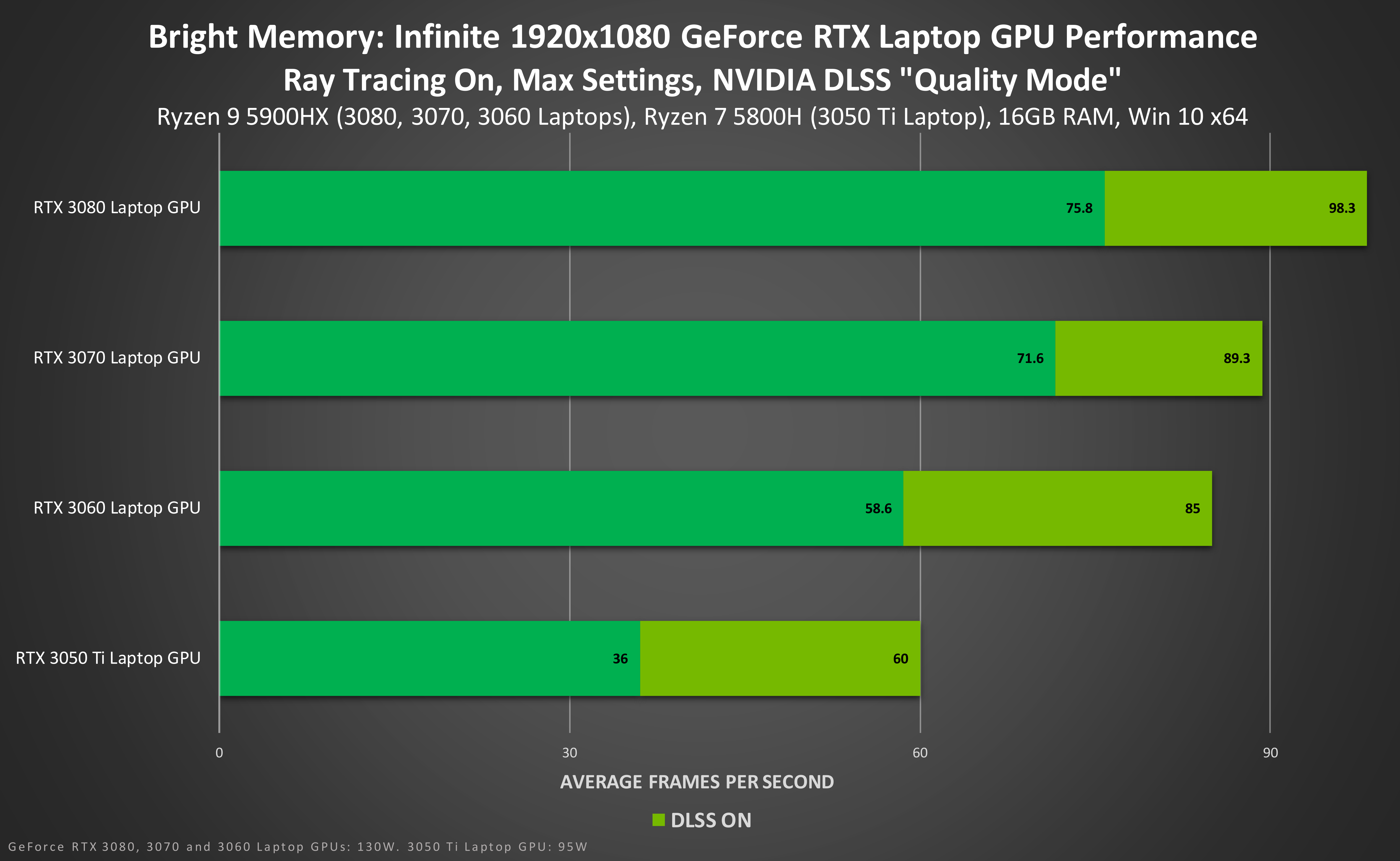Three New Games Come Out Tomorrow With Nvidia Ray Tracing, DLSS and Reflex
One title brings with it five ray tracing effects
In three new Nvidia blog posts today, Nvidia details all the graphical enhancements and Nvidia exclusive features coming to Battlefield 2042, Grand Theft Auto: The Trilogy, and Bright Memory: Infinite such as DLSS and Nvidia's Reflex technology. Battlefield 2042 and Bright Memory: Infinite will be launching with ray-tracing as well, with the latter featuring up to five different ray tracing effects, which might bring your GPU to its knees. All three titles will be released tomorrow in some form -- in the case of Battlefield 2042, it will be available only for early access participants and will drop on Nov. 19.
We've already covered what Battlefield 2042 will offer in terms of graphical features here. But to sum everything up, Battlefield 2042 will be coming with DLSS, Reflex, and ray-tracing support on launch day tomorrow. Ray Tracing will come in the form of RTAO (Ray Traced Ambient Occlusion) and be exclusive to the PC.
Grand Theft Auto: The Trilogy, is a remaster of Grand Theft Auto III, Vice City, and San Andreas with an assortment of graphical upgrades including new lighting, high-resolution textures, better LODs, newly enhanced GTAV style controls, and environmental upgrades across the board.
The only Nvidia feature coming to The Trilogy is DLSS support, which Nvidia notes can accelerate performance up to 85% depending on what graphics card you use.
Bright Memory: Infinite -- Five Ray Tracing Effects In One Title
Out of the three games, Bright Memory: Infinite takes the cake as having the most amount of graphical features including a whopping five full ray tracing effects to take advantage of. The game will also include Reflex technology and Nvidia DLSS support which will be an absolute must to run all five RT effects at once on most of Nvidia's RTX GPUs.
The five Ray Tracing features include RT caustics, reflections, refractions, Ambient Occlusion, and Shadows. Any screen space techniques have also been upgraded to ray tracing, to give effectively all the reflections in the game ray tracing support.
Due to the vast amount of graphical fidelity in the game, the developers of Bright Memory: Infinite have also implemented Nvidia's ReSTIR Global Illumination technique to cut down the amount of rays required for each frame to improve frame rates.
Get Tom's Hardware's best news and in-depth reviews, straight to your inbox.
ReSTIR does this with a specialized path sampling algorithm that is optimized for highly parallel GPU architectures. The algorithm is designed specifically to improve indirect lighting quality without taking a huge performance hit.



According to tests by Nvidia, running this new title at 4K max settings is nearly impossible with most RTX GPUs. Only the RTX 3080 and RTX 3080 Ti managed to squeeze out a playable 30FPS. But with DLSS performance enabled, performance more than doubles on most RTX GPUs.
The RTX 2060 sees the most noticeable advantage, brining its frame rate from just 7FPS native to 34.1 FPS in DLSS performance mode.
But frame rates improve drastically in 1440P, with DLSS in quality mode. Despite using a higher quality DLSS setting, all GPUs manage to have higher FPS at 1440P than at 4k with DLSS performance mode.
Finally Nvidia demonstrates DLSS's capabilities at 1080P with its entire lineup of RTX 30 series laptop GPUs, ranging from the RTX 3050 Ti to the RTX 3080. With DLSS set to quality mode, even the low-end RTX 3050 Ti managed to squeeze out a solid 60FPS.
Nvidia highly recommends installing the latest GeForce Game Ready driver to play all three titles on GTX or RTX GPUs without issue.

Aaron Klotz is a contributing writer for Tom’s Hardware, covering news related to computer hardware such as CPUs, and graphics cards.
-
sizzling I think it speaks volumes that COD Vanguard didn’t both with Ray Tracing even though it predecessor Cold War does. It’s really a waste of FPS.Reply -
D1v1n3D Vangaurd is a PR stunt Activision has lost its way got way to greedy and it is showing far to obvious they don't care about their client player base just the money. Fact is if you dont care and listen to your client player list you wont have one forever they will leave for another company willing to appease. Look at all the great corporations that have collapse with this same ideology if you don't listen and adapt to the times you will die off like toysrus jc penny Kmart and many others that are gone gone, for either not listening and adapting or just not adapting to the times.Reply -
gman68 I really wonder how sales figures for new games will be since so few people can get their hands on the hardware required to play them.Reply -
sizzling Reply
And yet I still find them amount the most enjoyable FPS. Seems they have listened, who wants Ray Tracing in an FPS game?D1v1n3D said:Vangaurd is a PR stunt Activision has lost its way got way to greedy and it is showing far to obvious they don't care about their client player base just the money. Fact is if you dont care and listen to your client player list you wont have one forever they will leave for another company willing to appease. Look at all the great corporations that have collapse with this same ideology if you don't listen and adapt to the times you will die off like toysrus jc penny Kmart and many others that are gone gone, for either not listening and adapting or just not adapting to the times. -
Jim90 While it's always nice to push tech, I do wonder just what percentage of a scene/game qualifies for that "Ray Tracing" sticker on the label - a shiny puddle or two? The fewer shiny puddles, the higher fps?Reply -
Geezer760 Reply
Well, I'm pretty SURE games with a "Ray Tracing" sticker on the label will qualify for is a higher price tag for the damn game, instead of $59.99 it could be $79.99, that's why I NEVER buy games day 1, I'll wait for it to drop to $20 maybe $30 before I buy any game.Jim90 said:While it's always nice to push tech, I do wonder just what percentage of a scene/game qualifies for that "Ray Tracing" sticker on the label - a shiny puddle or two? The fewer shiny puddles, the higher fps? -
hotaru.hino Reply
I do.sizzling said:Seems they have listened, who wants Ray Tracing in an FPS game?
But then again I don't really have a hard on for 100+ FPS. -
JarredWaltonGPU Reply
Amazingly, you can look at the prices of games and see that those with ray tracing... don't cost any more than non-RT games. Battlefield 2042, even though it implements arguably the least needed RT effect (RTAO), starts at $59.99:Geezer760 said:Well, I'm pretty SURE games with a "Ray Tracing" sticker on the label will qualify for is a higher price tag for the damn game, instead of $59.99 it could be $79.99, that's why I NEVER buy games day 1, I'll wait for it to drop to $20 maybe $30 before I buy any game.
https://store.steampowered.com/app/1517290/Battlefield_2042/
The same can be said for any number of other games with RT. Bright Memory Infinite was the work primarily of a single person, and costs $39.99 I think? I'll find out in a few hours I suppose.
Yeah, this is very true. RT in an heavy action game is a waste. Battlefield, Call of Duty, Fortnite, etc. don't need RT. People would rather turn down graphics fidelity for higher fps. But in a single-player experience, RT can be a nice extra. Only a few games have really used it in a way that makes a noticeable difference, though. Control, Cyberpunk 2077, Metro Exodus Enhanced, and Bright Memory Infinite looks like it will have a lot of cool RT effects. Shadow of the Tomb Raider, Call of Duty, Battlefield V/2042, Metro Exodus (original), and most other games with RT it hardly makes a difference in looks.sizzling said:And yet I still find them amount the most enjoyable FPS. Seems they have listened, who wants Ray Tracing in an FPS game? -
PapaCrazy Replygman68 said:I really wonder how sales figures for new games will be since so few people can get their hands on the hardware required to play them.
Seriously! I'm still on a GTX1080 (and feel lucky to even have one of those) but need to pick titles carefully. The last thing I purchased was the F/18 for DCS, which is relatively low-demand. Anything really new, like MSFS or Cyberpunk are off the table for me. I don't see how the shortage couldn't be affecting sales. They sure have affected mine.